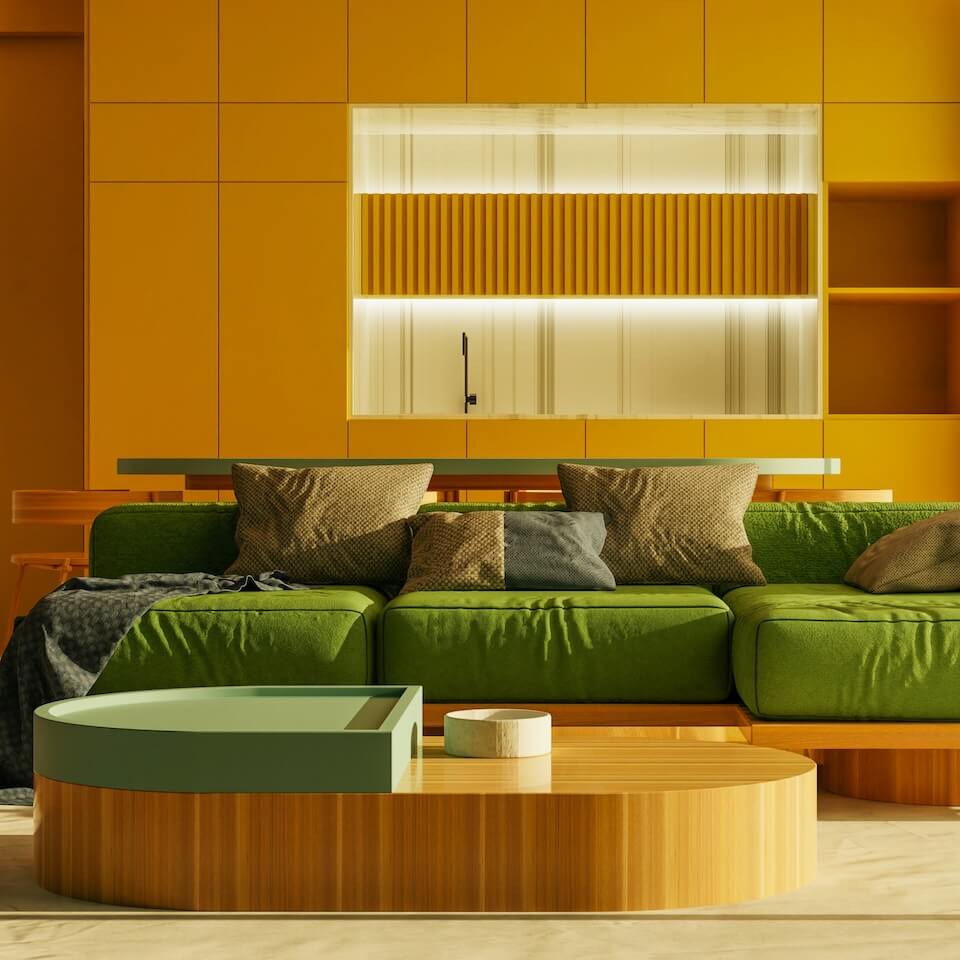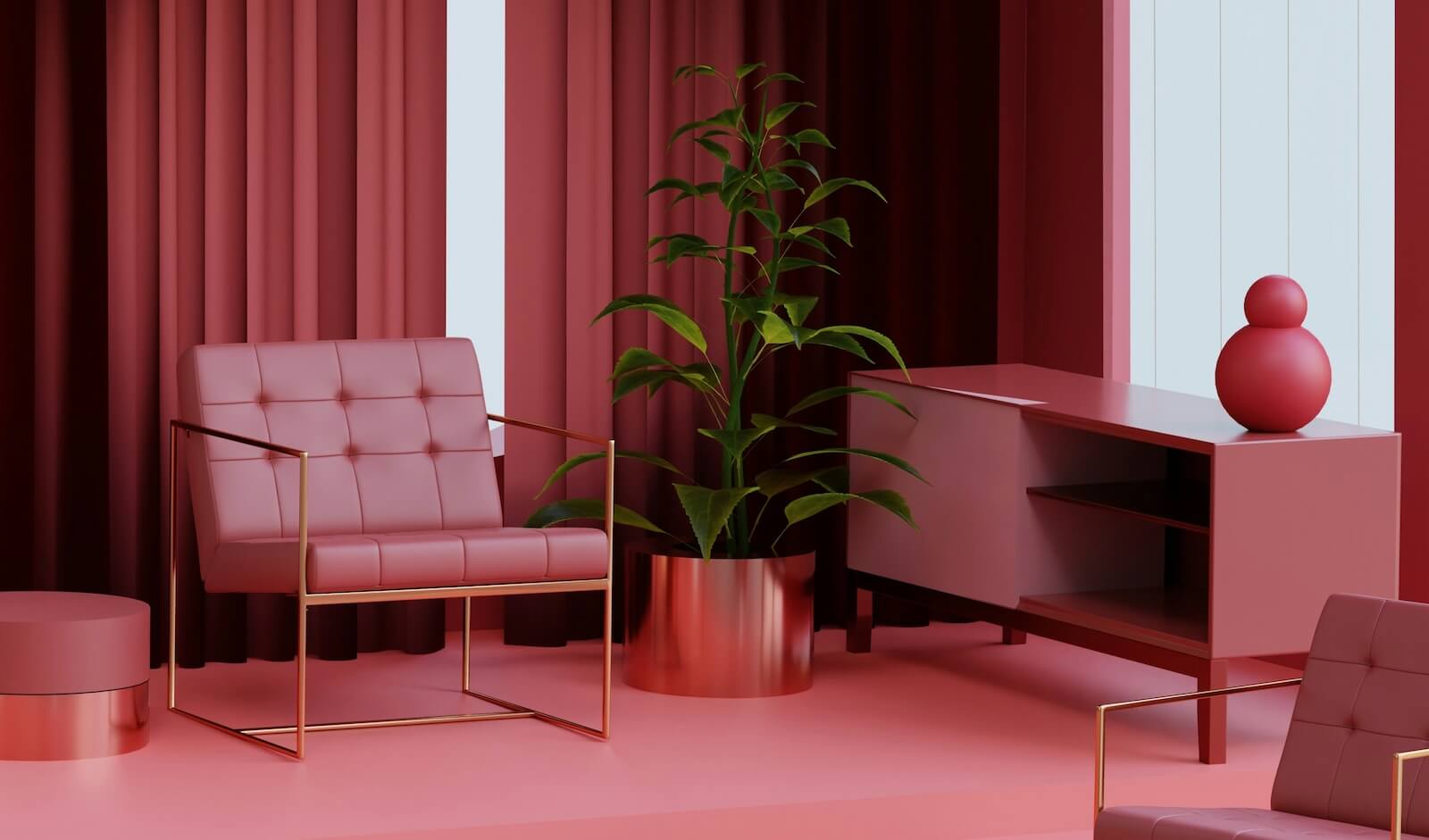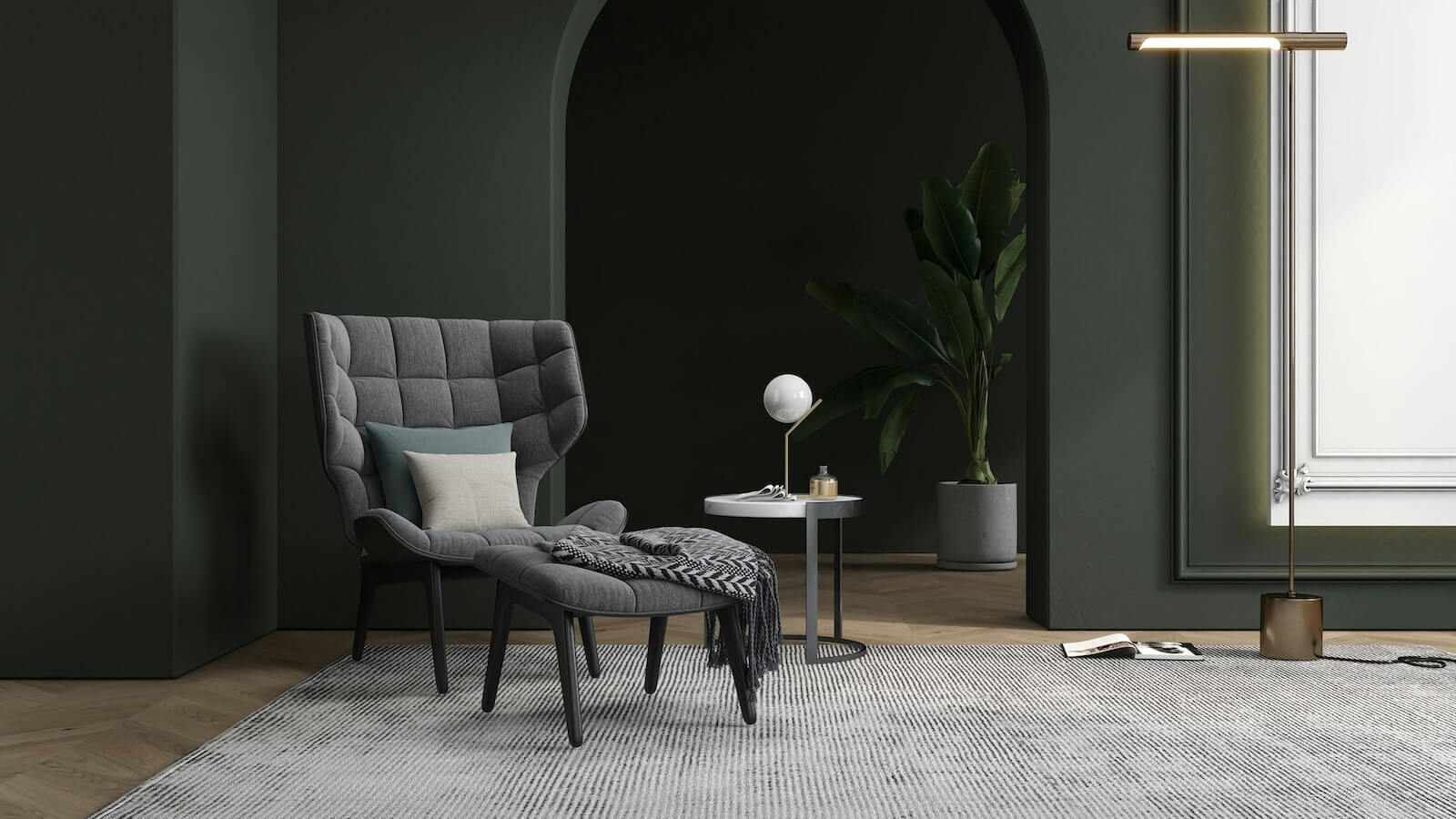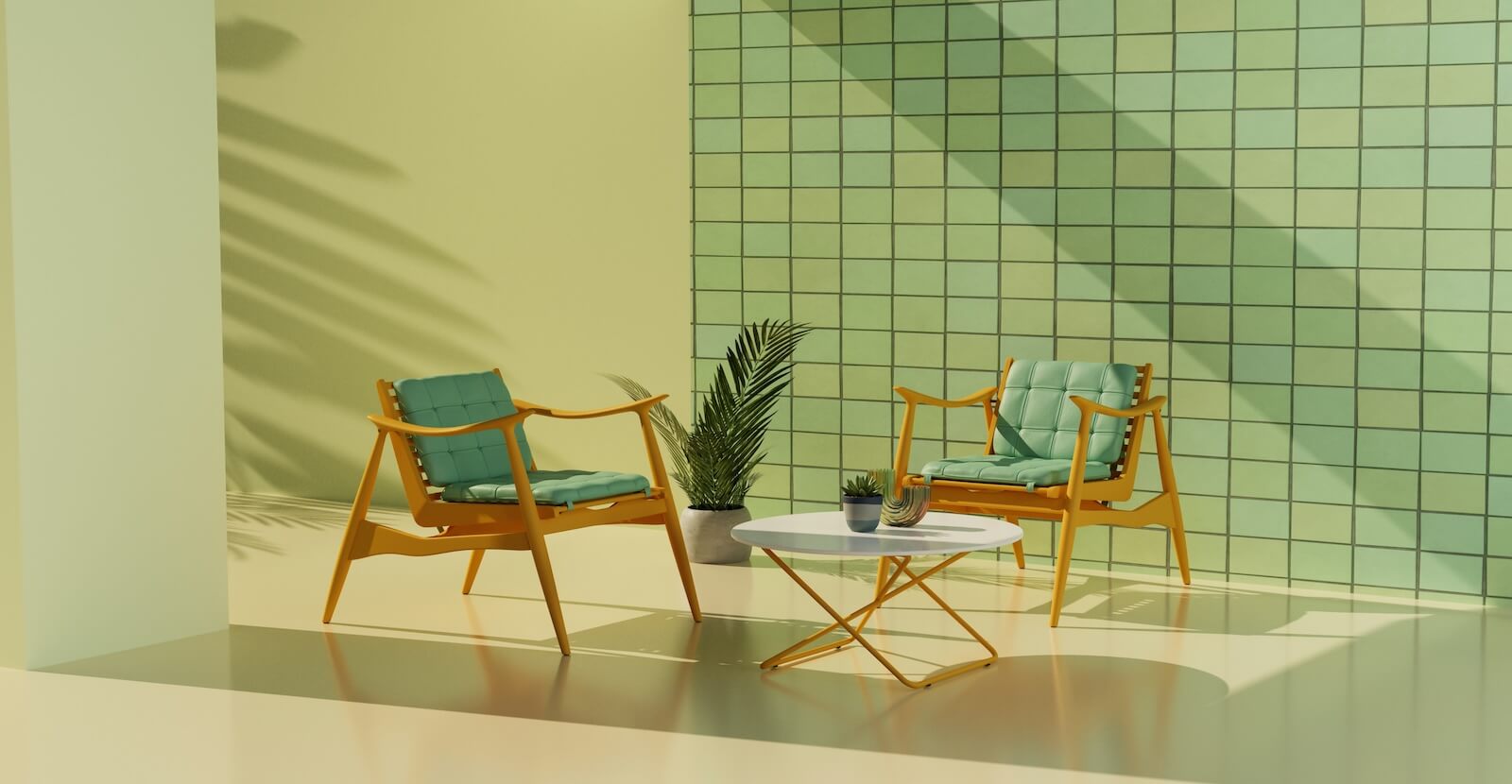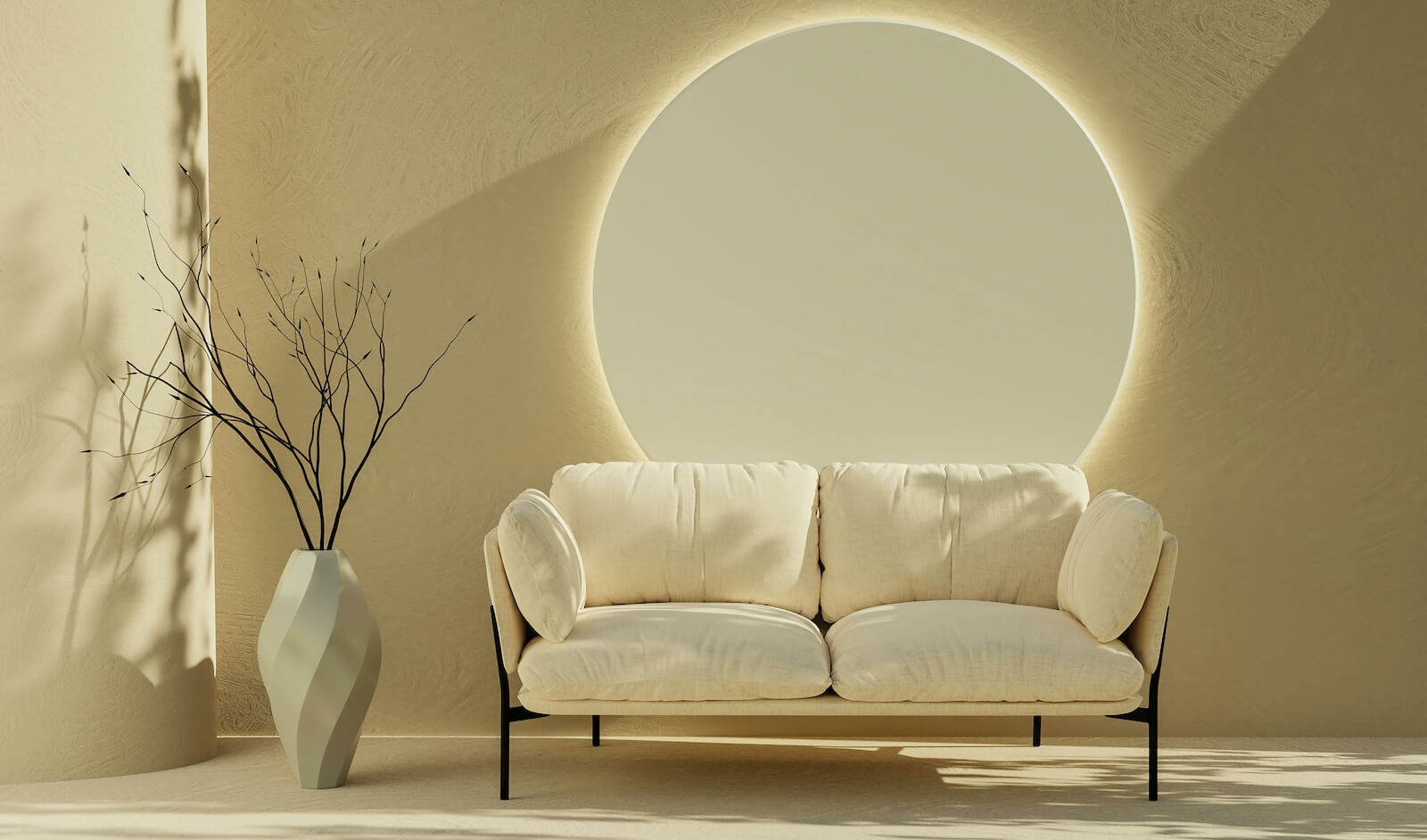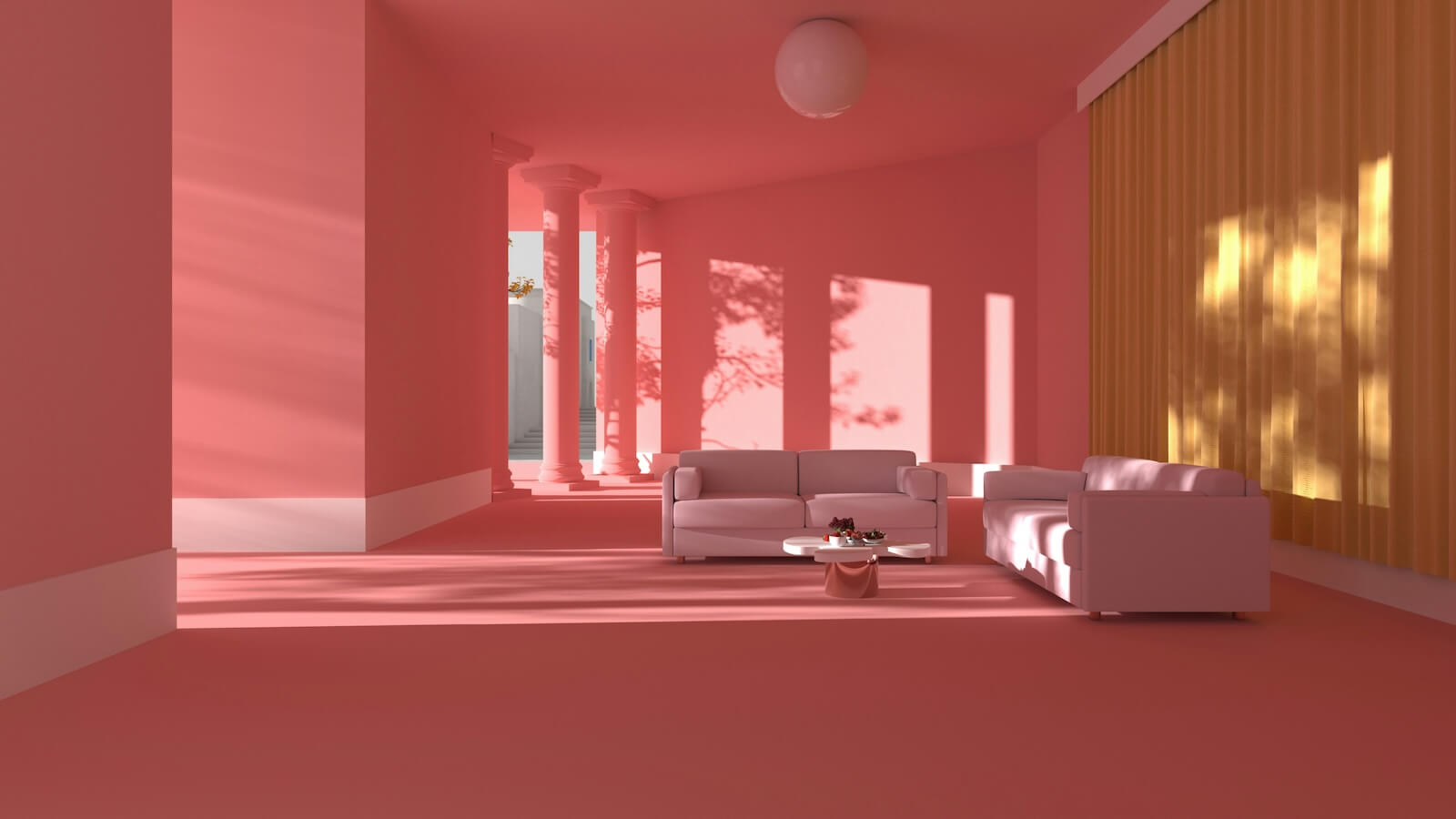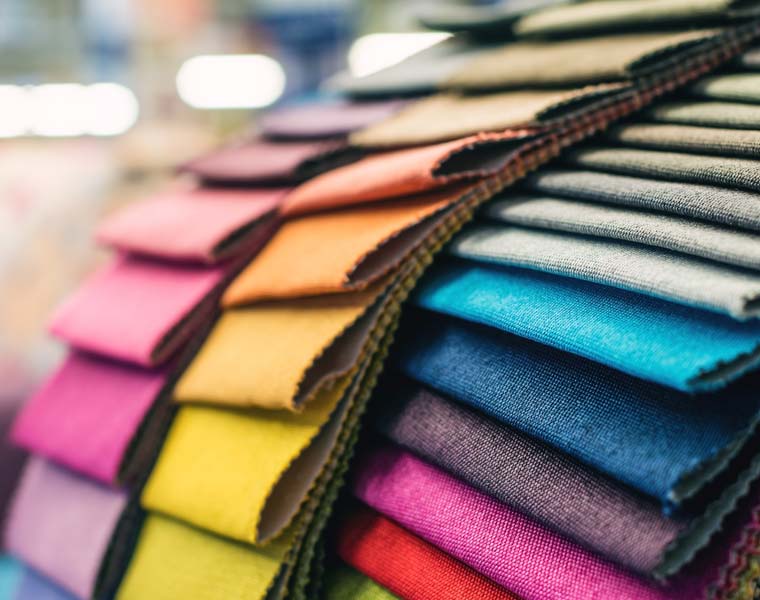Not all interior design trends translate to commercial design or the workplace. Some trends suit homes, hotels or specific types of spaces more than they do an office.
Colour drenching, however, is one of those trends that has been making waves in residential interiors and is now starting to find its way into the world of office design and refurbishment.
In this blog post, we explore whether this bold design technique has a place in modern office fit out projects and most importantly, whether it can support essential factors like productivity and employee wellbeing.
What is colour drenching?
Colour drenching is where you decorate everything in a room in the same colour palette. Texture and tones can vary but the vast majority of elements are the same hue, from walls and ceilings to woodwork, furniture fabrics and decor.
Colour drenching creates a statement, unified aesthetic, which is leading the way in terms of interior design trends for 2025 and beyond. It helps to create a cohesive, immersive environment that can completely transform how a space feels and functions.
The technique works by removing visual boundaries and instead creating a seamless flow throughout a room. Dimension can be created by using lighter and darker shades of the same colour — a strategy that becomes part of the space’s overall design language.
What makes colour drenching particularly interesting for office environments is its ability to create distinct zones and atmospheres within a larger workspace.
Rather than relying on physical partitions, the technique uses colour psychology to subtly influence how people feel and behave in different areas. More on the pros and functions of colour drenching your office later.
Read more: Zoning without walls: Space division in office fit out >>
The psychology behind colour in the workplace
Understanding colour psychology is going to be crucial if you’re considering colour drenching as part of your next office fit out.
This is because our environment directly impacts our mood, productivity and overall wellbeing at work — and colour is a huge part of the experience of a physical space.
Current UK workplace statistics reveal that 82% of workers say feeling happy and engaged at work is key to their productivity, while 95% report that their emotional wellness directly impacts their performance. These figures highlight just how important it is to get the psychological aspects of office design right.
The effect of different colours
Different colours can trigger different psychological responses, making the choice of shade absolutely critical when colour drenching an office space. Here are some common examples:
- Blues – Promote calm focus and mental clarity, making them great choices for focus work settings. This helps reduce stress, which is particularly valuable in high-pressure work environments.
- Greens – Connect us with nature and promote balance and harmony. They can reduce eye strain during long periods of screen work and help reduce mental fatigue. Green also promotes creative thinking and problem-solving.
- Warm, rich colours (e.g. terracotta or burnt orange) – Can energise and inspire collaboration, making them strong choices for meeting rooms or breakout spaces. The warmth also lends itself to resimercial office design schemes.
- Neutral tones – Greys, warm whites and beiges create a sense of calmness and provide a backdrop that allows other design elements to shine.
Read more: Colour: the great communicator in office interior design >>
The key is matching the psychological impact of your chosen colour with the intended function of the space. A colour-drenched focus work setting would benefit from calming blues or greens, for example, while a co-working area would benefit from more energising tones.
Should you colour drench your office design?
This depends entirely on your specific business needs, company culture and the type of work your team does.
Colour drenching isn’t a one-size-fits-all solution but when used thoughtfully as part of an overall office fit out strategy and design scheme, it can be an engaging and visually impressive addition.
Consider colour drenching if you want to:
- Make a bold statement with your workspace interior design.
- Signal space division and different settings without physical barriers.
- Foster specific experiences and ambience in settings.
- Find new ways to engage space users.
- Communicate your brand identity creatively.
However, there are some important things to consider before you dive right into drenching your workspaces in unified colours, including:
- Team preferences and working styles – Some people thrive in bold, immersive environments, for example, while others can find them distracting or overwhelming.
- Longevity and future-proofing – It’s always wise to be careful when incorporating trend-led design features like colour drenching. Think about whether it’s something you’re going to still want in the short-term and the long-term.
- Budget – How much you can realistically afford is an important practical consideration. Ensuring consistent colour temperatures across different materials and surfaces can become costly.
The great news is that modern office design increasingly focuses on providing choice and control, so you might colour drench specific zones while maintaining more neutral areas elsewhere.
This will give you flexibility about where you colour drench and to what extent and will also help you control and scale your spending.
The pros and cons of colour drenching in offices
Still considering colour drenching your commercial space? Let’s explore the main pros and cons of the trend in more detail to help you make the right decision for your business.
The advantages of colour drenching
- Creates character – Colour drenching can transform a bland, generic office space into something memorable and engaging. This can be a competitive significant advantage when attracting and retaining talent.
- Alternative space division – Different coloured zones can signal different types of work activities without the expense and inflexibility of permanent physical partitions.
- Can make spaces feel larger or more intimate. Light colour drenching can make smaller offices feel more spacious by blurring the boundaries between walls and ceilings. Darker tones, on the other hand, can create cosy, focused environments that feel secure and conducive to concentration.
- Boosts employee engagement – Using colour to influence the experience of a workspace can drive productivity and engagement. Investing in employees’ experience of the space also promotes dedication to the company as staff feel more considered.
Potential drawbacks of a colour-drenched office
- Overwhelming or distracting employees – Too much colour or the wrong colour choice, can create an environment that feels claustrophobic or makes it difficult to concentrate.
- Limited flexibility for future changes – Unlike adding colourful accessories or furniture, colour drenching is less quick and easy to switch up. Changing your mind later means a complete redecoration project, which can potentially be costly and disruptive.
- ‘Trend fatigue’ – Specific colour choices might feel dated more quickly than neutral alternatives, depending how fast trends move.
- Lighting complications – Colour-drenched spaces can be more challenging to light effectively. Dark colours absorb light, which can create dim working conditions, while some colours can enhance eye strain.
- Industry fit – Depending on your industry and client base, a boldly colour-drenching may not be an appropriate approach to office design and decoration.
Making colour drenching work in practice
Successfully implementing colour drenching in an office design scheme requires careful planning and attention to detail. It’s not simply about choosing a colour and applying it everywhere and you’ll need to consider how different elements of the overall space work together.
Here are some top tips from our experts:
- Be subtle and strategic – Rather than colour drenching your entire workspace, use the technique selectively. Choose specific rooms or settings to experiment with.
- Consider lighting – Colour-drenched spaces often require more sophisticated lighting solutions than neutral environments or those with lots of natural light. Layer different types of lighting to ensure the space remains functional while supporting the desired atmosphere.
- Think about texture and finishes – While everything might be the same colour, varying textures and materials prevent the space from feeling flat or one-dimensional. Mix matte and semi-gloss finishes, for example, as well as different fabrics and materials. This will help create subtle visual interest within the unified colour scheme and multi-sensory appeal.
- Visibility and air quality – Darker colour-drenched spaces might need additional ventilation to prevent them from feeling stuffy. Also consider how the colour choice affects visibility in the space and tailor your approach accordingly.
- Integration with tech and furniture – Ensure your colour choice works harmoniously with your workplace technology, especially screens and projectors that need to be easily seen. Similarly, consider how new and existing furniture and finishes will look against your chosen colour scheme.
- Maintenance – Some colours show marks, fingerprints and wear more easily than others. Factor this into your choice, especially for high-traffic areas or surfaces that people touch a lot.
Getting the balance right
The most successful colour-drenched office projects tend to be those that use the technique strategically rather than universally. Instead of colour drenching an entire workspace, consider using it to create specific zones that serve particular purposes.
A colour-drenched quiet work area might use calming blues or greens to promote focus and concentration. A collaborative space could embrace warmer, more energising tones that encourage interaction and creative thinking. Reception areas might use the technique to create a memorable first impression that reflects your brand personality.
This zoned approach allows you to harness the benefits of colour drenching while maintaining the flexibility and variety that most modern workplaces need. It also reduces the risk of overwhelming employees or creating an environment that becomes tiring over time.
Remember that colour drenching is just one tool in the office design toolkit. The most effective workspaces combine various design strategies—from lighting and acoustics to furniture selection and space planning—to create environments that support business success and solve workplace issues.
If you’re considering colour drenching as part of your next office fit-out project, we would recommend working with experienced commercial design professionals like the Penketh Interiors team, who can help you navigate the practical and aesthetic challenges involved.
The right expertise can help you harness the power of this bold technique while avoiding the potential pitfalls.
Ready to explore whether colour drenching could work for your workspace? Get in touch with our team of office fit out specialists to discuss how innovative design approaches can support your business objectives and create an environment where your team can thrive.
